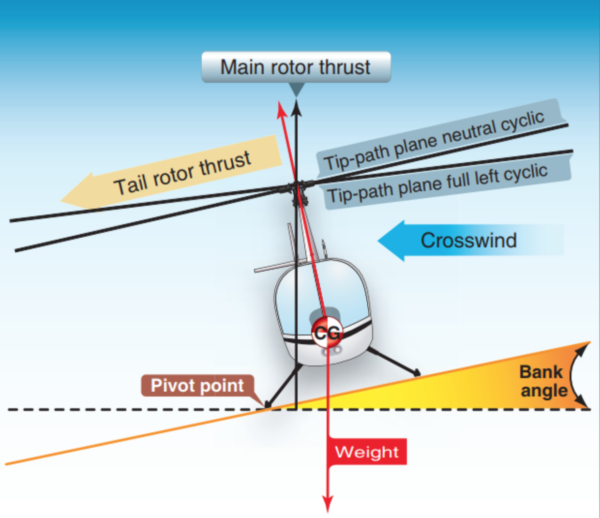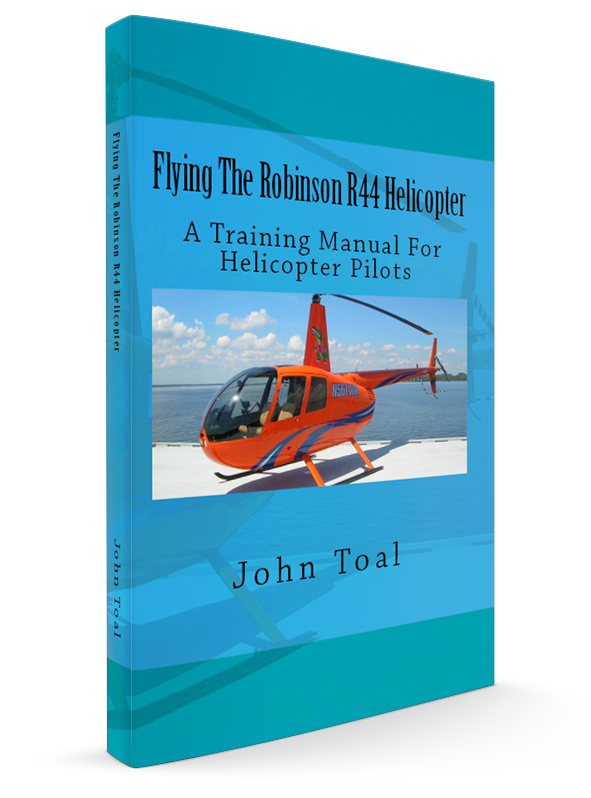Dynamic Rollover in Helicopters
(Updated on 2nd January 2021)

Dynamic Rollover
What is dynamic rollover?
Dynamic rollover sounds like a term that might be used by the lottery companies. Every helicopter pilot is aware that dynamic rollover in helicopters can be a problem when taking off or landing a helicopter.
Dynamic rollover is caused when a wheel or a skid on the aircraft becomes attached to the ground and acts as a pivot point that the helicopter can roll around. It is much more likely to happen on take-off and if it is not handled correctly, the helicopter will roll over on its side and suffer substantial damage. This does occasionally occur to experienced pilots but is much more likely to happen with low time pilots.
Have you ever tried to pull the handle of a door and the door refuses to move? Then, when you push the handle the door opens and takes you by surprise. You were not expecting it to happen. The same thing can happen during a take-off. You raise the collective smoothly and one of the skids lifts of the ground. You expect the other skid to follow but unfortunately it is caught on something and refuses to move. Your natural reaction is to raise the collective further to make the helicopter break free of the ground but all you achieve is a fast roll of the helicopter towards the stuck skid. The momentum of this roll may be sufficient to keep the helicopter rolling over even though you now lower the collective. The inevitable happens and the helicopter rolls over unto its side and suffers severe damage.
Results
The results of a dynamic rollover are usually very severe. The helicopter is usually destroyed. The damage from a helicopter rolling over at the end of an autorotation is much less than the damage caused by dynamic rollover. This is because during an autorotation the blades are unpowered and if it rolls over, it will quickly come to rest. During a take-off however, you will be using a lot of power and if the helicopter subsequently rolls over, it will not come to rest so quickly and much more damage will occur.
Take-off
It can be seen that take-offs can cause a problem. Icy ground and frozen skids can be a real problem. Muddy or sticky ground, rocks, joints in concrete can all cause skids to catch and lead to dynamic rollover. Care must be taken during each take-off but especially the first take-off. Make sure you are looking well ahead. Raise the collective smoothly until you feel the helicopter get light on the skids. From this point onwards, you must move the collective very slowly. The closer you get to taking off, the slower the collective should be moving. Try a small “wiggle” by moving the pedals slightly. This will give you an indication if both skids are free. If you are on a level surface, one skid will probably start to rise before the other. It is important not to rush the collective at this stage. If you feel the helicopter is rolling over too far, smoothly lower the collective and ensure that both skids are on the ground before recommencing the take-off. When both skids (wheels) are clear of the ground, get the helicopter to a safe height to make sure that the skids do not inadvertently catch on something. When the helicopter is on the ground with the blades turning, never take your hand off the collective unless the collective is fully down and locked. There have been many instances of passengers moving the collective or collectives vibrating up until the helicopter rolls over. Making sure that the aircraft is within its balance limits will also ensure that you do not run out of cyclic travel during normal take-offs and landings, thereby reducing the risk of dynamic rollover.
Did you enjoy this post? Why not leave a comment below and continue the conversation, or subscribe to my feed and get articles like this delivered automatically to your feed reader.








Comments
No comments yet.
Leave a comment